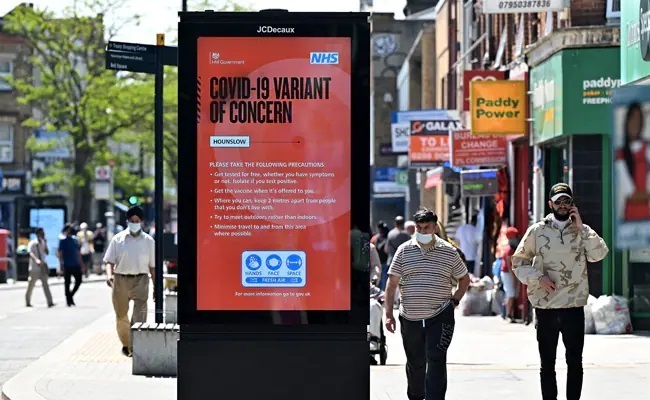
New Delhi: A preliminary study conducted by the All India Institute of Medical Science (AIIMS), Delhi claimed that the presence of COVID-19 Delta variant (B1.617.2) is predominantly found even after the first dose or both doses of vaccine has been administered.
The study included 63 people who got breakthrough infections; of which 36 patients received two doses, while 27 had received one dose of vaccine.
“SARS-CoV-2 lineages could be assigned for a total of 36 (57.1 per cent) samples, 19 (52.8 per cent) in patients who completed both doses and 17 (47.2 per cent) in patients who completed only a single dose. B.1.617.2 was found to be the predominant lineage with 23 samples (63.9 per cent) out of which 12 were in fully vaccinated and 11 in partially vaccinated groups. 4 (11.1 per cent) and 1 (2.8 per cent) samples were assigned the lineages B.1.617.1 and B.1.1.7 respectively. The B.1.617.2 lineage was first described in India and associated with increased transmissibility as well as immune escape and has grown to become one of the predominant lineages in India,” the AIIMS study said.
Ten patients received Covishield while 53 received Covaxin, of which 41 were males and 22 were females.
“Our analysis included 63 cases of vaccine breakthrough infections for which the dates of vaccines could be ascertained, of which 36 patients received two doses, while 27 had received one dose of vaccine. Ten patients received AZD1222/Covishield while 53 received BBV152/Covaxin,” the study read.
The patients had a mean age of 37 (21-92), of which 41 were males and 22 were females. None of the patients had any comorbidities which could act as a predisposing factor for breakthrough infections.
“As lineage B.1.617.2 (Delta) was also prevalent in this group, any significant differences in lineages among fully and partially vaccinated samples were analysed. The difference was not found to be significant in both double dose vaccinated and single-dose vaccinated groups,” the study added.
The report further stated that there are no reports of deaths in a sample size of 63 people, even though almost all cases reported high-grade unremitting fever for 5-7 days.
“Viral load at the time of diagnosis was high in all the patients irrespective of vaccination status or type of vaccine received. The initial course of disease with high-grade non-remitting fever lasted for five to seven days in the vaccinated group, similar to the clinical presentation in unvaccinated patients. During the subsequent course of illness, neither disease worsening (stable biomarkers) nor mortality was reported in the present group, confirming the previous observations,” as per the study.
The presence of Delta variant was about 60 per cent of people who received a double dose of either vaccine and it was found in 77 per cent of people who received one dose.
Of the breakthrough infection cases analysed, 10 patients (8 with double doses of vaccine and 2 with single vaccine dose) additionally had total Immunoglobulin G (IgG) antibodies assessed, of which 6 patients had IgG antibodies a month before the infection, while 4 had antibodies after the disease episode.
The patients included health care workers (24, 13 of which were from the same hospital) and close analysis of the genomic sequences suggests that the samples clustered separately with origins closely clustering with lineages from different states, suggesting the disease transmission happened most likely from different and independent sources.
The study also made the comment on the prevalence of Delta variant in Delhi and said, “Reinfections and vaccine breakthrough infections are rare occurrences and genomic sequencing of vaccine breakthrough infections can provide useful insights. In the present group of vaccine breakthrough infections investigated using genome sequencing, closely overlapping and mirroring the COVID-19 cases in the state of Delhi, the variants of concern B.1.617.2 and B.1.1.7 comprised the majority, but the proportions were not significantly different in comparison with the population prevalence of the variants during this period with high community transmission.”
Mortality due to COVID-19 was ascribed to 2 per cent cases (primarily older population, average age-82 years). The study has not been peer-reviewed
Follow this link to join our WhatsApp group: Join Now
Be Part of Quality Journalism |
Quality journalism takes a lot of time, money and hard work to produce and despite all the hardships we still do it. Our reporters and editors are working overtime in Kashmir and beyond to cover what you care about, break big stories, and expose injustices that can change lives. Today more people are reading Kashmir Observer than ever, but only a handful are paying while advertising revenues are falling fast. |
| ACT NOW |
| MONTHLY | Rs 100 | |
| YEARLY | Rs 1000 | |
| LIFETIME | Rs 10000 | |










